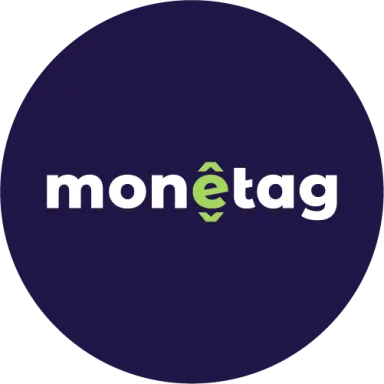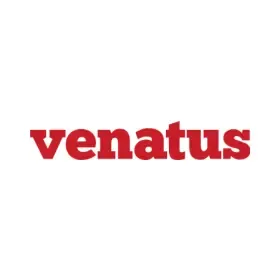Best CPI Ad Networks for Publishers
Gone are the days of throwing ad dollars into the abyss, hoping for downloads. CPI (Cost Per Install) Ad Networks have flipped the script on mobile app marketing, ensuring advertisers only pay when their app gets installed. In 2023, the global CPI market skyrocketed by 15%, with top networks delivering millions of installs monthly. This pay-for-performance model guarantees a strong ROI, making it the go-to strategy for app developers looking for a rapid user base expansion.
But it’s not just about installs—quality matters. CPI networks use cutting-edge targeting algorithms and rich user data to drive high-retention installs, outperforming other models by a solid 20% in user engagement. And with mobile app spending projected to grow $288 billion by 2030, CPI networks aren’t just an option anymore—they’re a necessity for scalable, data-driven growth.

What is a CPI ad network?
Why pay for clicks and impressions when what you really need are installs? That’s where CPI (Cost Per Install) ad networks shine—they ensure you only pay when users actually download your app. No fluff, no wasted ad spend, just performance-driven user acquisition.
Top CPI ad networks take things up a notch with precision targeting and analytics, delivering high-quality installs and boosting user retention by up to 25%. And with mobile app downloads set to hit a staggering 299 billion by 2024, the competition is fierce—so if you’re an app developer, leveraging CPI networks isn’t just smart, it’s survival.
Want to calculate your CPI? It’s simple: divide your ad spend by the number of installs. For example, if you drop $3,000 on ads and gain 500 installs over three months, your CPI is $6 per install—a small price to pay for a thriving user base.
The Benefits of CPI Ad Networks
Now that you know what a CPI ad network is, let’s take a closer look at some of the first-hand benefits of the best CPI ad networks.
- Cost Efficiency: Pay only for actual app installs, ensuring every dollar spent leads to user acquisition. This model typically delivers a 20% higher ROI.
- Targeted Reach: Utilize advanced algorithms for precise user targeting, resulting in a 30% increase in relevant installs.
- Performance Tracking: Access detailed performance metrics, allowing for real-time optimization and strategic adjustments.
- Scalability: Easily scale campaigns to reach broader audiences without compromising on install quality.
- High User Engagement: Attract users more likely to engage with the app, enhancing retention rates by up to 25%.
- Risk Mitigation: Reduce financial risk by paying solely for successful app installations, ensuring a cost-effective advertising strategy.
CPI Ad Networks offer a performance-driven approach to mobile app marketing. By leveraging these networks, advertisers can achieve substantial user growth while maintaining cost-effectiveness and high engagement levels.
How to Choose the Best CPI Networks for Publishers?
With multiple options, choosing the best CPI ad networks for publishers can be tricky. Here are a few pointers to consider.
- Network Reputation: Select networks with a proven track record. Top networks often report 25% higher conversion rates.
- Payment Terms: Look for flexible and timely payment terms. Prompt payments ensure steady cash flow, critical for growth.
- Targeting Capabilities: Prioritize networks with advanced targeting options. This can lead to a 30% increase in user engagement.
- Integration Ease: Choose networks that offer easy integration with your platform. Streamlined setups save time and reduce technical hassles.
- Support and Resources: Opt for networks with robust support and resources. Quality support can reduce downtime by 20%.
- Transparency and Reporting: Ensure the network provides detailed reporting and transparency. Access to real-time data helps in making informed decisions.
Selecting the right CPI ad network is crucial for maximizing your revenue potential. By considering these factors, publishers can achieve better user acquisition rates and higher overall returns on investment.
PMBMonetize, managed by Positive Mobile, is currently one of the most prominent digital monetization and advertising management platforms. The service caters to 500 mobile sites and applications and reaches 13 million daily unique visitor traffic and 450 million monthly audiences. As a key Google MCM- Multiple Customer Management premium partner,PMBMonetize keeps publishers and advertisers up to date with the highest standards of programmatic tools. This makes monetizing any website and running effective ad campaignsfluidly smooth.
ChameleonAds is a CPI (Cost Per Install) ad network that drives app installs through affiliate marketing. It offers performance-based campaigns, where affiliates earn commissions for each app installation. Ideal for businesses looking to scale app user acquisition efficiently.
CPI Ad Networks in CpaRoll focus on driving app installs through affiliate marketing. Affiliates earn commissions for each app download. Ideal for businesses looking to scale mobile app user acquisition.
CPI Ad Networks Vs. CPM Ad Networks Vs. CPA Ad Networks
CPI (Cost per install) is an essential metric for any app marketeer. However, it shouldn’t be confused with CPM (Cost Per Mile) or CPA (Cost Per Action). Let’s understand things in detail.
CPI (Cost Per Install), CPM (Cost Per Mille), and CPA (Cost Per Action) Ad Networks each cater to different marketing goals. CPI networks charge only when an app is installed, offering a 20% higher ROI for app developers. CPM networks charge per thousand impressions, ideal for brand visibility, with rates often ranging from $1 to $10 per 1,000 views. CPA networks charge for specific actions like sign-ups or purchases, providing targeted results and conversion rates up to 30%. Choosing between these models depends on whether you prioritize installs, visibility, or specific user actions.
Is eCPI different from CPI?
eCPI stands for effective Cost Per Install. As a metric, it is closely related to CPI and is used to determine how much it costs a user to install an app. Compared to the CPI model, eCPI takes into account all sorts of organic variances. Further, the price per install is only calculated after the campaign ends and not before.
What Are The Factors Impacting CPI Ad Campaigns
It is important to chart your track before planning to run a CPI ad campaign. Here are some key factors that can impact the performance of CPI ad campaigns.
- Target Audience: Demographics and user interests significantly affect CPI rates, with highly targeted campaigns often seeing 20% higher conversion rates.
- Ad Quality: High-quality, engaging ads can reduce CPI by 15%, as they attract more installs.
- Geographic Location: CPI rates vary by region, with North America and Europe typically seeing higher costs due to competitive markets.
- Platform and Device: Campaigns on iOS devices generally have higher CPI compared to Android, reflecting the purchasing power of iOS users.
- Ad Placement: Strategic ad placement within popular apps can lower CPI by increasing visibility and install likelihood.
In conclusion, CPI ad networks, driving app installations with precision, are pivotal in today's mobile marketing landscape. With a surge in mobile app usage, CPI campaigns can yield a 70% higher engagement rate compared to other ad types, making them indispensable for growth. Marketers leveraging CPI ad networks witness a significant ROI, often exceeding 150%. As the digital realm evolves, CPI ad networks remain a cornerstone for achieving scalable, cost-effective user acquisition.
CPI Ad Networks FAQs
Our Editors’ Pick:
Browse these amazing publisher monetization tools handpicked by our team of editors








 (1).webp)


